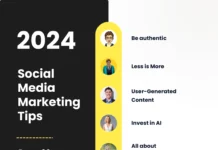Almost six months since the COVID-19 outbreak began, new marketing strategies are starting to crystallize. Many of us have adjusted to working from home, found new ways to communicate remotely, and adapted brand messages to fit the situation. So it’s finally time to answer the question: What comes next? What will post-COVID marketing look like?
During the first half of 2020, distinct trends emerged in digital marketing strategies. Those trends have been analyzed in detail as part of a coronavirus marketing survey by Easypromos, a rising martech platform based in Europe.
Let’s take a look at how brands are responding to COVID-19, the biggest challenges they face – and what all of this means for post-COVID marketing strategies.
Marketing responses to COVID-19
In the first few months of the crisis, marketing responses varied hugely.
Some businesses shut down their marketing teams to reduce exposure. Others pulled all their existing content and rebuilt marketing campaigns from scratch, shifting to a totally new brand message. Several major global brands have put off key digital upgrades, just as the world is switching over to life online. These bold moves made big headlines… but they are not the whole story.
Other businesses have evolved and expanded their marketing strategies during the crisis. Data from Easypromos’ survey reveals that a significant number of brands kept marketing spend at the same level (18%) – or even increased their investment and activity (17%).
Another striking feature of 2020 has been brands doubling down on their community commitments. Businesses are finding new ways to support frontline workers, boost local economies, and help out consumers while they juggle work, a virtual social life, and childcare. Content marketing and online support networks have come to the fore as brands give consumers the tools they need to thrive.
The biggest challenge for marketing teams right now
Whatever their approach, all marketers face the same challenge. It’s a tricky balancing act between reduced consumer spending… and a larger-than-ever appetite for content and customer service.
Across most industries (with the obvious exceptions of groceries and healthcare), spending is down. People can’t travel, eat out, meet friends or go shopping on weekends. Fewer opportunities exist to spend casually or on impulse.
But that doesn’t mean that spending has stopped altogether. Instead, it’s shifted. Consumers are now interested in brands which offer no-contact customer service, entertainment, and commitment to the community. And they still want to hear from brands, in the form of valuable content, customer service, and ads.
According to research from Twitter, people want to see ads and branded content right now. They’re specifically happy to see ads which give them a sense of normality or highlight the positive work the brand is doing. Brands need to adapt their content and tone – and should work hard to stay connected to their audiences.
Right now, consumers are engaging with very specific messages:
- reliable, accurate information
- positive news stories
- rapid customer service
- how brands support healthcare workers
- how brands support vulnerable people
- how brands support their own employees
That’s all good news. And the even better news is that marketers have been swift to adapt. Over the last few months, marketing strategies have emerged which give consumers what they want, while keeping budgets under control.
Businesses are also starting to open up investment to develop and equip their marketing teams. According to Easypromos, brands say they’re committed to implementing lessons learned in the crisis, opening up new marketing channels, and training staff to work on them.
5 Tips for post-COVID marketing

How can you predict which brands will bounce back after the crisis? One key factor might be marketing spend and activity.
In previous economic shocks, businesses which stuck to marketing and adapting their strategy have tended to recover faster, as they stayed at the consumer’s front of mind and the exposure created a long-term impression on consumers.
Let’s look at 5 key tactics helping brands weather the crisis and prepare for the post-COVID future.

1. Activate your social media
In an ideal world, your social media should already be active and buzzing. Social channels are the perfect place to share regular updates and positive stories, and stay on top of customer service – all the things which consumers are looking for right now.
But it’s not just about the emergency response. The reputation and relationships which you build now will continue to support business recovery when the crisis ends. Focus on building a strong community around the brand, with active followers who share and engage with your content.
Start conversations with posts and encourage discussion around topics that appeal to your target audience. This could be a good time to look into starting a Facebook group, Twitter chat, or LinkedIn group for brands with a B2B audience.
2. Target customers with deals and offers
Retail statistics show that customers are still spending – but less than before, and in different behavioral patterns. Promotional offers, coupons and deals are a time-honored way to tip the balance in your favor. Focus on offering added value or assistance to customers, instead of giving them the hard sell.
According to the Easypromos survey, 30% of brands have reached out to customers with special offers and discounts. But that 30% includes a variety of different strategies.
Some brands are offering free trials or delivery discounts to encourage remote shopping. Others are offering special product bundles, based on current consumer needs and preferences. Still others have shared branded mini-games, photo contests or social media challenges to bring some fun into the mix, with a discount or deal coming after the game.

Some businesses have opted to focus offers specifically on frontline workers and vulnerable people. While the offers applied to a smaller audience, customers who aren’t eligible for the deal still appreciate the commitment to the community. Your audience cares about what brands are doing, not just about products and sales but also about doing ‘good’.
3. Test new marketing channels
We’ve already mentioned trying new social media strategies such as Facebook groups, but this is also a great moment to experiment and develop new marketing channels. A healthy 20% of brands surveyed say they’re testing new ways to reach customers and spread their message.
Small high street businesses are getting comfortable with ecommerce. B2B companies are testing new platforms for webinars, presentations and training sessions. Other social media-savvy brands are building audiences on TikTok, giving away free Zoom backgrounds, and experimenting with virtual meet-ups, book clubs, and even pub nights.

The one thing people are craving at the moment is connection – especially those that are alone or distanced from family. This is the time to get creative with different platforms and features which foster interactivity with audiences.
Start with a few small-scale experiments while budgets are still tight. That way, you will have a good understanding of what resonated well with your brand and customers and know what to focus on when investment begins to flow again.
As the Harvard Business Review points out, the digital innovations being made now are likely to stick around. So if you can add new communication and marketing channels now, you’ll be ahead of the game later.
4. Offer valuable content
2020 is the year that content marketing has finally come into its own. Why? For one simple reason: people are bored. They’re looking for new, digital ways to be entertained and informed.
Whether they’re working from home, managing childcare, homeschooling, or simply trying to relax on weekends… people are desperate for entertaining content, new ideas, and emotional connection.

Sit down and brainstorm your areas of expertise – not just as a company, but from individual employees as well. Think about sharing tutorials, educational resources, online games, recipes, challenges, personal brand stories or even movie recommendations.
Just remember that content marketing strategies take time to pay off. You’ll need a clear goal and follow-up strategy for every piece of content that you create and share. Start building your content base now, and you could reap the benefits once the economic recovery begins. High quality content adds value for consumers and raises a brand’s reputation.
5. Strengthen your core message
Finally, one of the most popular marketing strategies during this time has been to double down on your core message. Keep demonstrating your brand values and showing consumers the “why” behind your brand.
While this point might seem obvious, it’s worth repeating while so many brands are pausing or changing up their marketing strategies. Even if your business does change significantly during this time, you should still be recognizable to consumers.
How has your brand responded to the crisis? Do you have a post-COVID marketing strategy in place? I’d love to hear your thoughts and experiences in the comments!
See also: How COVID-19 Changed Social Media Marketing











